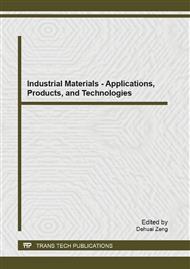p.355
p.361
p.365
p.373
p.376
p.382
p.388
p.394
p.400
Circular Plate-Membrane with Small Deflection and Maximum Sensitivity
Abstract:
Classical hextremum problem to determine the optimum geometrical parameters of a linear-elastic, homogeneous, isotropic circular membrane with a rigid central disk is the static effect of a concentrated force is solved. Ratio of 0.326 found between the inner and outer radius of the membrane plate provides the greatest sensitivity, efficient thickness and minimum materials consumption, which is a consequence of the implementation of the condition of reliability for the safety factor for the down to the limit state of springing element. The energy failure theory of Huber-Hencky-Mises (Huber M.T., Hencky H., Mises R.) is used as the constraint equation. Due to the complexity (transcendence) of the formula target sensitivity function that depends on two controlled variables, the procedure of maximization is performed by search for the direct numerical method. The developed mechanical-mathematical model of the optimization process is based on three well-known conditions proposed by G. Kirchhoff for the thin plate-bending theory.The derived formulas can be used for optimal design of capacitive, inductive and strain measuring force sensory data unit, in which the membrane requires the greatest move, that is, high sensitivity, and the membrane plate is loaded only by the working pressure without experiencing reaction from the mechanism of the device.
Info:
Periodical:
Pages:
376-381
Citation:
Online since:
August 2013
Authors:
Price:
Сopyright:
© 2013 Trans Tech Publications Ltd. All Rights Reserved
Share:
Citation:


